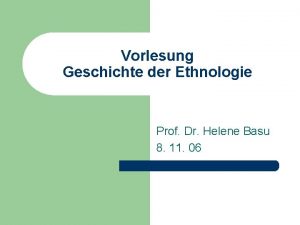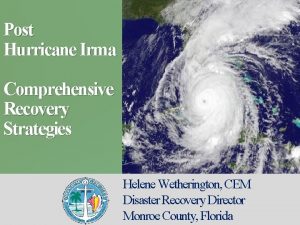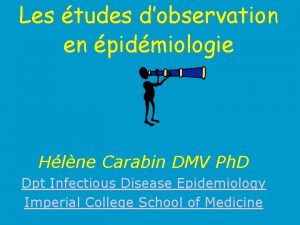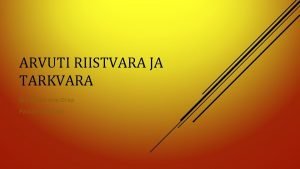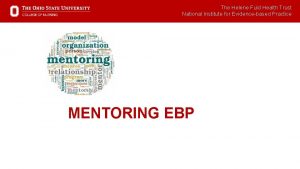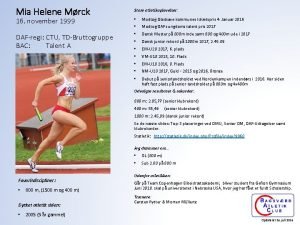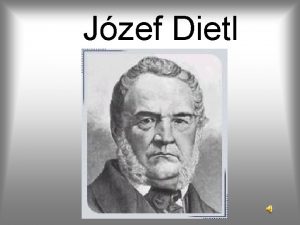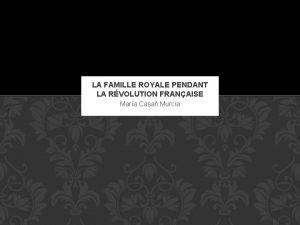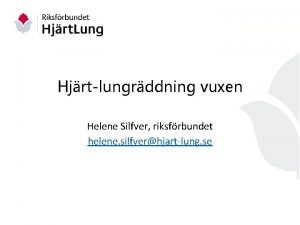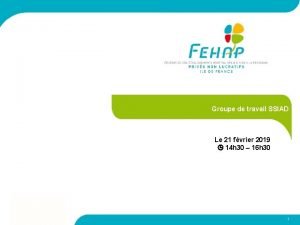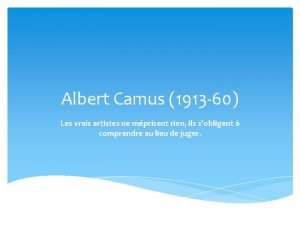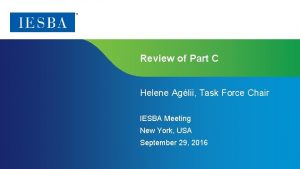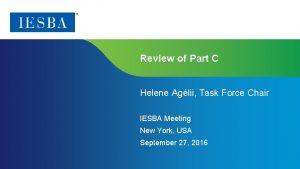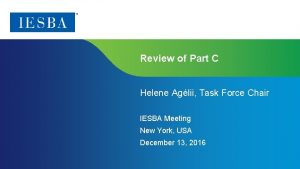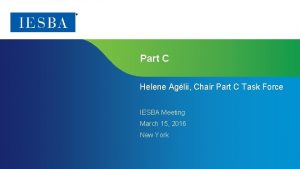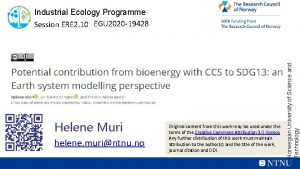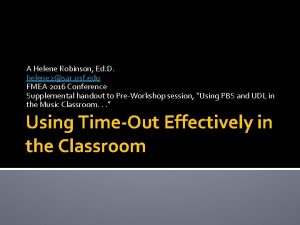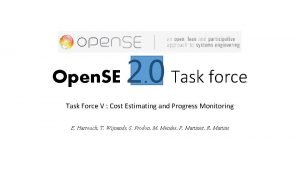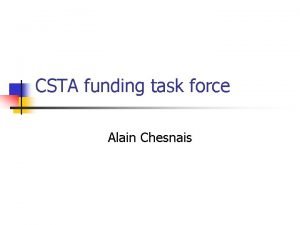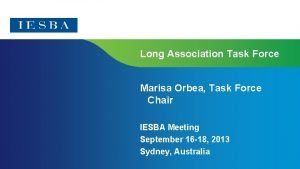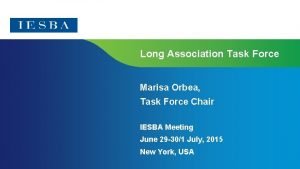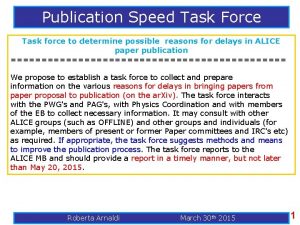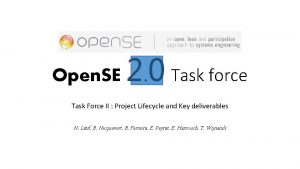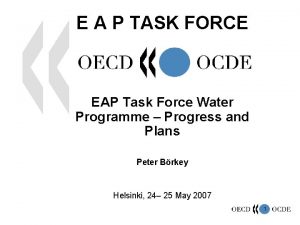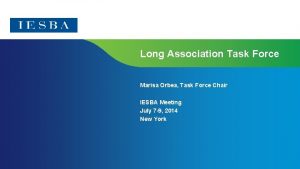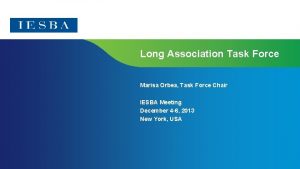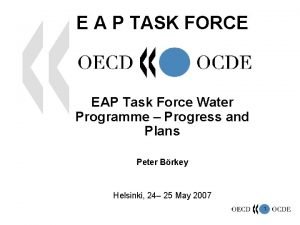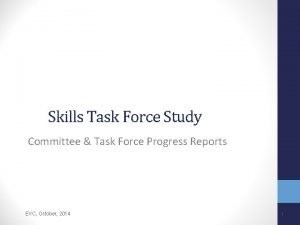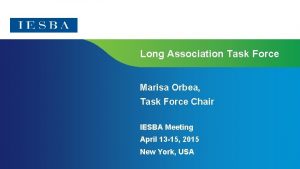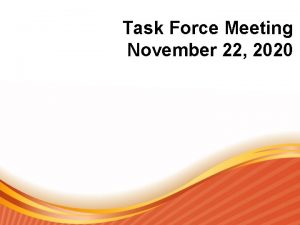Review of Part C Helene Aglii Task Force























- Slides: 23

Review of Part C Helene Agélii, Task Force Chair IESBA Meeting New York, USA September 27, 2016 Page 1 | Confidential and Proprietary Information

Applicability of Part C to PAPPs • March 2016: – Board agrees Part C applicable to PAPPs and addition of “explanatory paragraph” – First read of “explanatory paragraph” • June 2016: – Second read of “explanatory paragraph” Page 2 | Confidential and Proprietary Information

Applicability of Part C to PAPPs • June 2016 Board feedback: – Accountant’s relationship with employing organization – Signposting Page 3 | Confidential and Proprietary Information

Applicability of Part C to PAPPs R 120. X When facing an ethical issue, a professional accountant in public practice shall consider the context within which the issue has occurred. Where the accountant is performing professional activities pursuant to the accountant’s employment or ownership relationship with the firm employing organization, for example a firm, there might be guidance in Part 2 C that is applicable to those circumstances. If so, t The accountant shall comply with consult relevant provisions and comply with them. 120. X A 1 For example, where a professional accountant in public practice is faced with pressure from an engagement partner to perform a task without sufficient skills or training, or with unrealistic deadlines, the requirements and application material guidance is set out in Section 260 might be relevant. Page 4 | Confidential and Proprietary Information

Applicability of Part C to PAPPs • IESBA members are asked for views on the proposed revisions to the ”explanatory paragraph” Page 5 | Confidential and Proprietary Information

Applicability of Part C to PAPPs • Exposure of explanatory paragraph – Obligation added for PAPPs to consider Part C – TF: should be exposed – Can be exposed in: • Structure ED-2; or • Part C Phase 2 Page 6 | Confidential and Proprietary Information

Applicability of Part C to PAPPs • Do IESBA members believe that there is a need to expose the ”explanatory paragraph”? • If yes, should this paragraph be exposed as part of Structure ED-2 or as part of the Part C Phase 2 ED? Page 7 | Confidential and Proprietary Information

Proposed Restructuring • Restructured text presented in March and June 2016 meetings • TF proposals based on: – IESBA feedback received in June 2016 – Conforming amendments from Safeguards ED-1 (“Gray” paras. ) – Conforming changes to updated redrafting guidelines Page 8 | Confidential and Proprietary Information

Proposed Restructuring • IESBA feedback received in June 2016 – Clarification of PAIB • Focus on role that is being performed by PAPP instead of legal relationship • TF: align language with the explanatory paragraph and including a reference to that paragraph – Extant paragraph 310. 4 • TF: Addition of “such” for clarification Page 9 | Confidential and Proprietary Information

Proposed Restructuring • Glossary Definition of PAIB – Align glossary definition to extant para 300. 3 A professional accountant that is an employee d, contractor, partner, director (executive or non-executive) owner-manager or volunteer or engaged in an executive or non-executive capacity operating in such areas as commerce, industry, service, the public sector, education, the not for profit sector, regulatory bodies or professional bodies. , or an accountant contracted by such entities. • Do IESBA members agree to revised glossary definition? Page 10 | Confidential and Proprietary Information

Proposed Restructuring • Conforming Safeguards Amendments • Addition of example of advocacy threat: “A professional accountant, in order to obtain favorable financing, includes in, or excludes critical information from a prospectus. ” • Reposition of a familiarity threat to a self-interest threat • Do IESBA members agree to include an example of an advocacy threat and the repositioning of a familiarity threat to a self-interest threat? Page 11 | Confidential and Proprietary Information

Proposed Restructuring • IESBA members are asked for their views about the proposed revisions made to restructure close-off document, in particular the conforming changes arising from safeguards (i. e. , the paragraphs shaded in gray) Page 12 | Confidential and Proprietary Information

Phase 2 – Sec. 350 - Inducements • June 2016 IESBA views: – Bribery and Corruption should not be excluded – Guidance should include a “motivation test” – Proposed title not broad enough – Issue of cultural differences Page 13 | Confidential and Proprietary Information

Phase 2 – Sec. 350 - Inducements • IESBA views: Bribery and Corruption – Sec. 350 should address Bribery and Corruption – Legislation might not exist or inadequate • TF response: – Strawman not intended to exclude Bribery and Corruption – Revised principles-based direction to consider all types of inducements Page 14 | Confidential and Proprietary Information

Structure of Revised Sec. 350 • Introduction – Acknowledge Bribery and Corruption are significant problems in many jurisdictions and are unacceptable behaviors for all PAs • Application and Requirements – Requirement to understand laws and regulations and comply with them (consistent with NOCLAR standard) – Prominent position in revised standard • IESBA are asked for views on TF responses Page 15 | Confidential and Proprietary Information

Structure of Revised Sec. 350 • Examples of Inducements – Gifts, hospitality, entertainment, etc. – Some forms could be illegal (bribery); Others might not be illegal but could still be unethical • IESBA asked for their views on the extent of examples within the revised Section 350 and the Task Force’s proposed examples Page 16 | Confidential and Proprietary Information

Structure of Revised Sec. 350 • Assess intent of Inducement – Intention to improperly influence behavior – Consider how inducement will be perceived by others • Identify and evaluate threats – Trivial and inconsequential inducements not a threat to compliance with FPs – The third party test – List of factors provided to evaluate threats – CAG views Page 17 | Confidential and Proprietary Information

Structure of Revised Sec. 350 • Address threats - safeguards provided to reduce threats to acceptable level – Register in log – Consult with senior management or TCWG – Recuse from business-related decisions to individual/org – Secondary reviews • If cannot reduce threat to acceptable level, PA shall not offer or accept inducement Page 18 | Confidential and Proprietary Information

Section 350 • Cultural Differences – Consider cultural differences in the section – The consequences of refusing a gift • CAG views Page 19 | Confidential and Proprietary Information

Phase 2 – Sec. 350 - Inducements • Revised Title / Scope – “Inducements” not ideal – “Gifts and Hospitality” could narrow scope – “Inducements” should be considered neutral – TF: “Gifts, Hospitality and Other Inducements” • CAG views Page 20 | Confidential and Proprietary Information

Phase 2 – Sec. 350 - Inducements • IESBA are asked for their views on: – Proposed requirements – Related TF proposals Page 21 | Confidential and Proprietary Information

The Way Forward • First read of proposed revisions: Dec 2016 IESBA meeting • Second read with intention of obtaining approval for exposure: March 2017 IESBA meeting Page 22 | Confidential and Proprietary Information

The Ethics Board www. ifac. org
 Chapter review motion part a vocabulary review answer key
Chapter review motion part a vocabulary review answer key Tiered task bias task
Tiered task bias task Helene basu
Helene basu Dancing shoes helene schjerfbeck
Dancing shoes helene schjerfbeck Helene chan
Helene chan Helene wetherington
Helene wetherington étude transversale
étude transversale Helene heath
Helene heath Wanda-helene
Wanda-helene Helene melanie lebel
Helene melanie lebel Helene dellucci trauma
Helene dellucci trauma Pps hélène et alain
Pps hélène et alain Helene fuld health trust
Helene fuld health trust Mia helene mørck
Mia helene mørck Józef dietl helene zieterbarth
Józef dietl helene zieterbarth Helene felice
Helene felice Helene van caenegem
Helene van caenegem Plurianal
Plurianal Sophie hélène de bourbon
Sophie hélène de bourbon Ellen mac crory
Ellen mac crory Helene rasmusson
Helene rasmusson Helene antonini castera
Helene antonini castera Catherine hélène sintés
Catherine hélène sintés Nwcg s-330
Nwcg s-330


